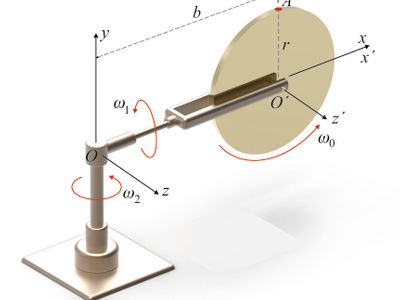Partikeldynamik i accelererande system. Stela kroppens mekanik. Analytisk mekanik för konservativa system.
SG1113 Mekanik, fortsättningskurs 6,0 hp

Mekanik, mest kroppars kinematik och dynamik samt analytisk mekanik
Information per kursomgång
Välj termin och kursomgång för att se aktuell information och mer om kursen, såsom kursplan, studieperiod och anmälningsinformation.
Information för HT 2026 CTFYS, CL programstuderande
- Studielokalisering
KTH Campus
- Varaktighet
- 2026-08-24 - 2026-10-23
- Perioder
HT 2026: P1 (6 hp)
- Studietakt
50%
- Anmälningskod
11453
- Undervisningsform
Normal Dagtid
- Undervisningsspråk
Svenska
- Kurs-PM
- Kurs-PM är inte publicerat
- Antal platser
Ingen platsbegränsning
- Målgrupp
- CTFYS åk 2, CLGYM MAFY, CMEDT åk 3
- Planerade schemamoduler
- [object Object]
- Schema
- Schema är inte publicerat
Kontakt
Kursplan som PDF
Notera: all information från kursplanen visas i tillgängligt format på denna sida.
Kursplan SG1113 (HT 2019–)Innehåll och lärandemål
Kursinnehåll
Lärandemål
Efter slutförd kurs ska studenten kunna:
- läsa och tillgodogöra sig matematisk text tillämpad inom mekanikområdet samt kommunicera resonemang och beräkningar inom detta område muntligt och skriftligt på ett sådant sätt att de är lätta att följa,
- redovisa härledningar av kursens centrala samband,
- identifiera ett konkret mekaniskt problem, samt välja lämpliga mekaniska modeller utifrån en problembeskrivning,
- översätta den mekaniska modellen till en matematisk modell,
- matematiskt behandla problemet och kritiskt analysera resultatets betydelse,
i syfte att använda ett fysikaliskt tänkesätt och kommunicera detta inom ramen för ingenjörsvetenskapliga sammanhang.
Kurslitteratur och förberedelser
Särskild behörighet
Aktivit deltagande i SG1112 Mekanik I.
Kurslitteratur
Nicholas Apazidis: Mekanik II, Studentlitteratur, Lund.
Examination och slutförande
Betygsskala
Examination
- INL1 - Inlämningsuppgift, 1,5 hp, betygsskala: P, F
- TENB - Problemtentamen, 3,0 hp, betygsskala: A, B, C, D, E, FX, F
- TENA - Teori/KS, 1,5 hp, betygsskala: A, B, C, D, E, FX, F
Examinator beslutar, baserat på rekommendation från KTH:s handläggare av stöd till studenter med funktionsnedsättning, om eventuell anpassad examination för studenter med dokumenterad, varaktig funktionsnedsättning.
Examinator får medge annan examinationsform vid omexamination av enstaka studenter.
När kurs inte längre ges har student möjlighet att examineras under ytterligare två läsår.
Examinator beslutar, i samråd med KTH:s samordnare för funktionsnedsättning (Funka), om eventuell anpassad examination för studenter med dokumenterad, varaktig funktionsnedsättning. Examinator får medge annan examinationsform vid omexamination av enstaka studenter.
Övriga krav för slutbetyg
Inlämningsuppgift (INL1; 1,5 hp), teoritentamen (TENA; 1,5 hp) kan klaras genom kontrollskrivningar, problemtentamen (TENB; 3,0 hp).
Examinator
Etiskt förhållningssätt
- Vid grupparbete har alla i gruppen ansvar för gruppens arbete.
- Vid examination ska varje student ärligt redovisa hjälp som erhållits och källor som använts.
- Vid muntlig examination ska varje student kunna redogöra för hela uppgiften och hela lösningen.